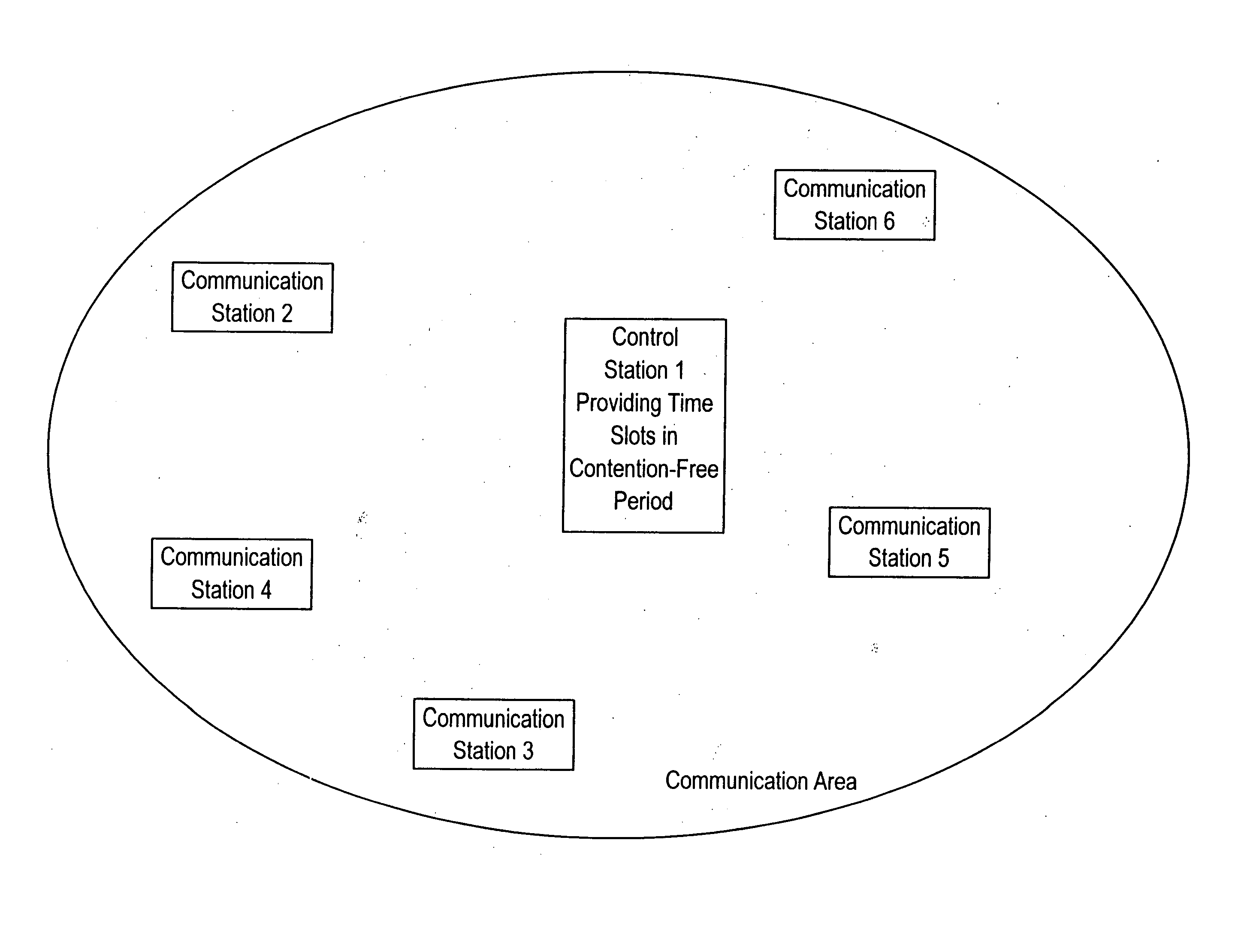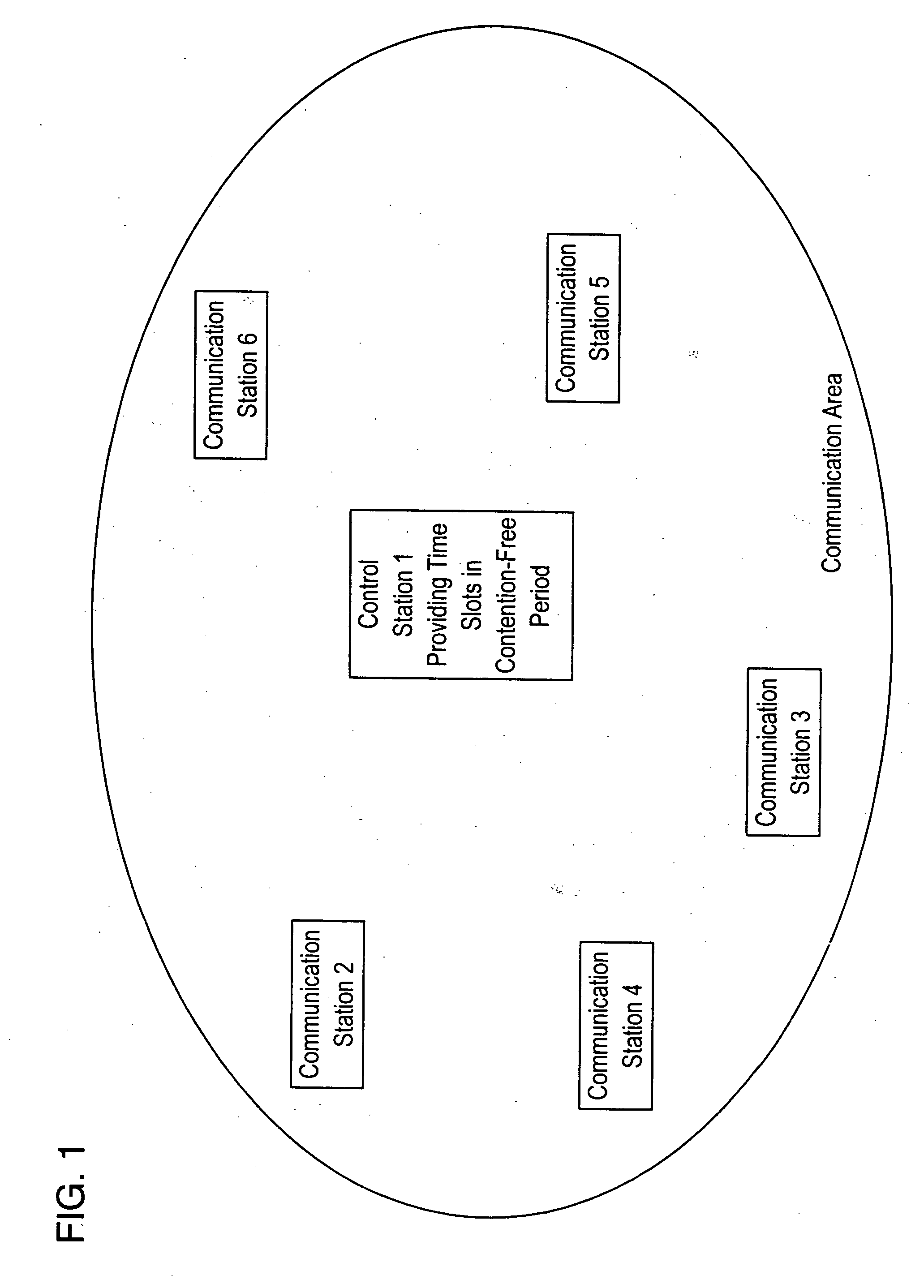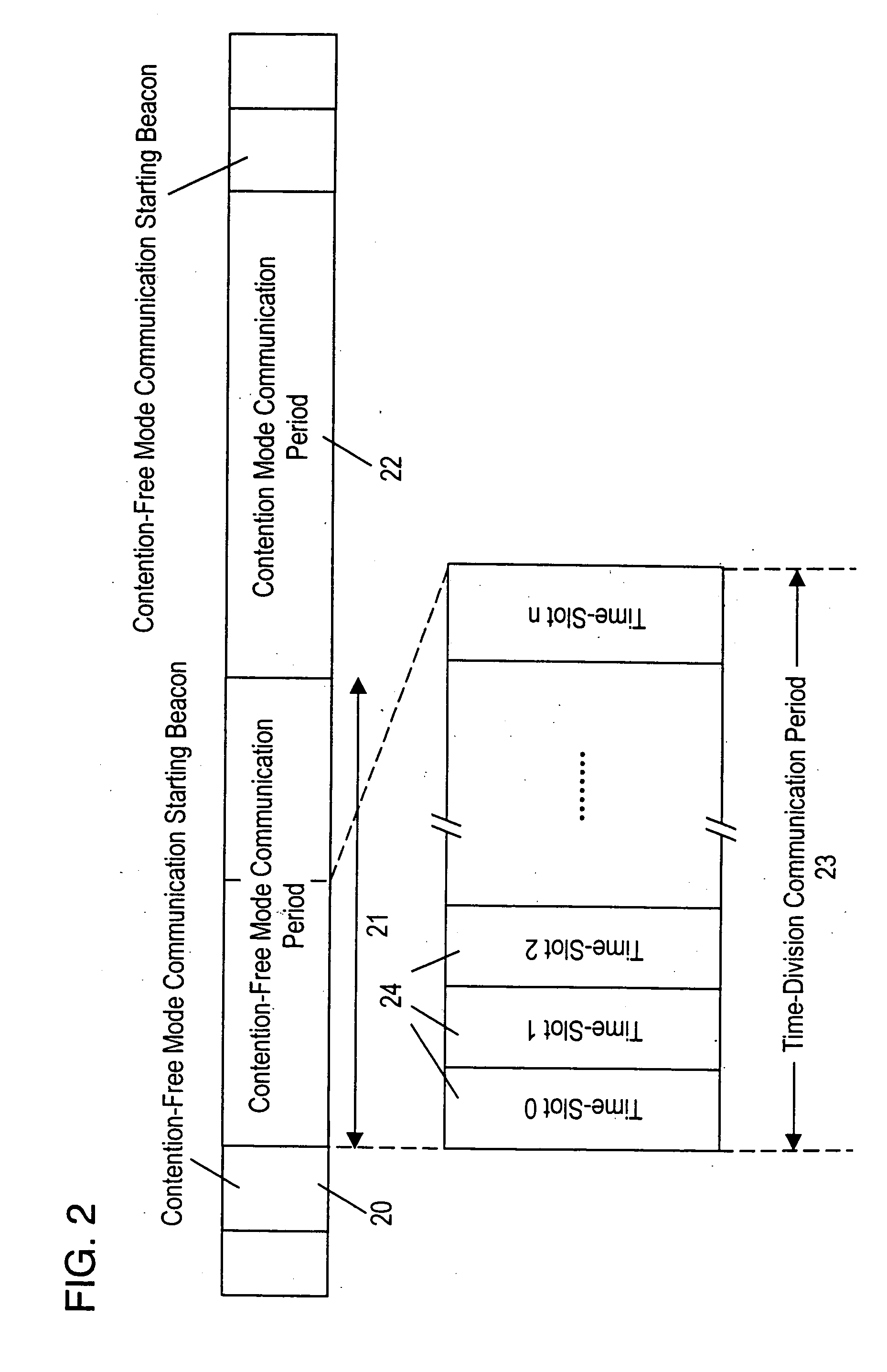Wireless network system and communication method employing both contention mode and contention-free mode
- Summary
- Abstract
- Description
- Claims
- Application Information
AI Technical Summary
Benefits of technology
Problems solved by technology
Method used
Image
Examples
Embodiment Construction
FIG. 1 illustrates an arrangement of a wireless network system employing the present invention as discussed hereinbelow. FIG. 7 is a time sequence for the wireless network system used with the present invention. The time sequence is identical to that specified in IEEE 802.11, although variations of this sequence may be employed. As a series of beacons is transmitted at constant intervals of time from the control station, contention-free mode transmission, which continues during a contention-free period (CFP), is initiated. The Interval of the contention-free period (CFP) is determined by a set of contention-free (CF) parameters included in the beacons as a CFP period. The transmission is maintained in the contention-free mode throughout the maximum length of the contention-free period (CFP Max Duration), allowing the contention-free mode communications to be carried out by the communication stations as triggered by a polling operation of the control station. The contention-free peri...
PUM
 Login to View More
Login to View More Abstract
Description
Claims
Application Information
 Login to View More
Login to View More - R&D
- Intellectual Property
- Life Sciences
- Materials
- Tech Scout
- Unparalleled Data Quality
- Higher Quality Content
- 60% Fewer Hallucinations
Browse by: Latest US Patents, China's latest patents, Technical Efficacy Thesaurus, Application Domain, Technology Topic, Popular Technical Reports.
© 2025 PatSnap. All rights reserved.Legal|Privacy policy|Modern Slavery Act Transparency Statement|Sitemap|About US| Contact US: help@patsnap.com



